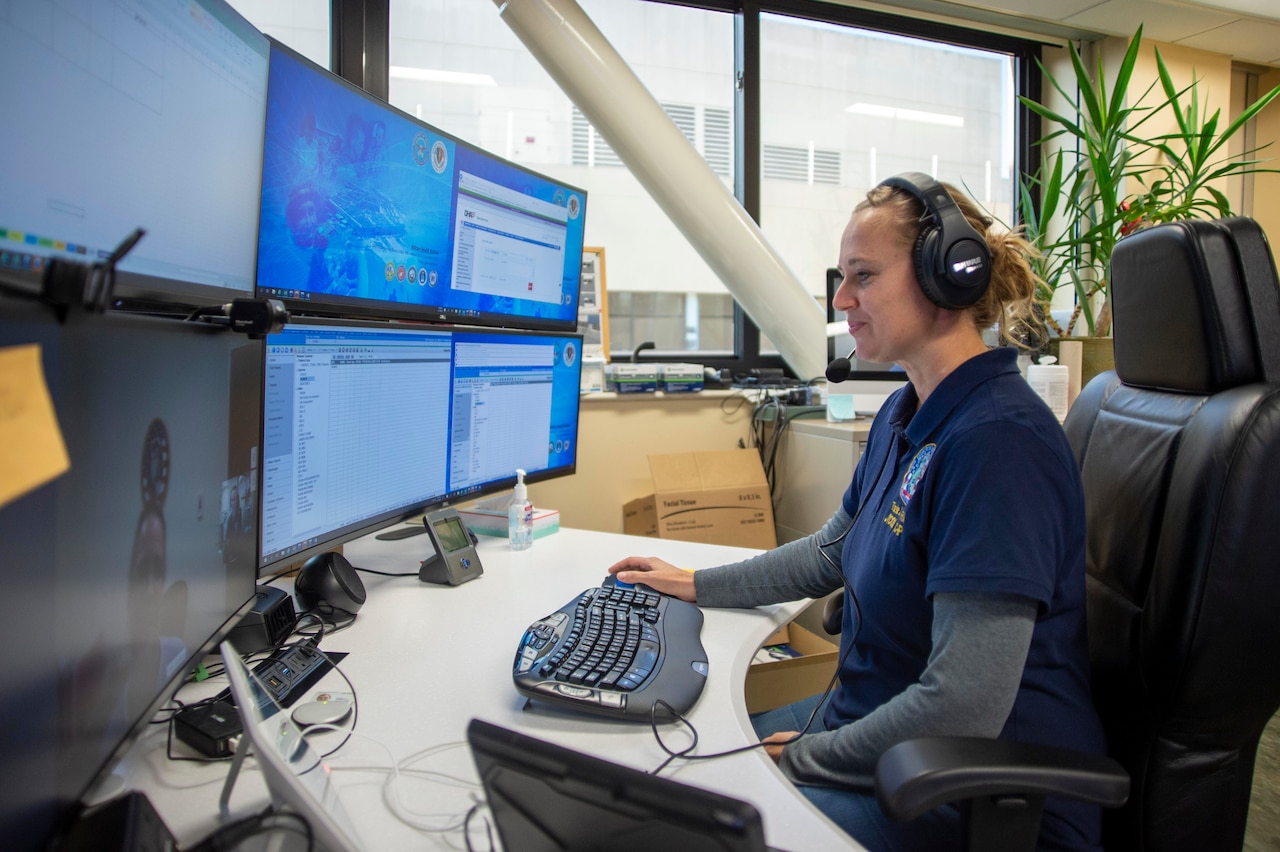Oct. 15, 2020 |
For the U.S. territory of Guam, situated in the middle of the Pacific Ocean, the isolation can be challenging when help is needed. The U.S. Naval Hospital there is part of the emergency response network and accepts emergent cases on a regular basis if it is the closest hospital. But during the COVID-19 pandemic, when more expertise was needed, Naval Medical Center San Diego stepped in to provide tele-critical care assistance from across the ocean more than 6,000 miles away.
The Defense Department's first-ever telemedicine tasking for Defense Support of Civil Authorities, or DSCA, began with a request from the naval hospital through the Guam government to the Federal Emergency Management Agency. FEMA requested telemedicine support for their medical operations in Guam because the number of critically ill COVID-19 patients exceeded both the number of available intensive care units beds and the ability of on-site providers, with critical care expertise, to care for these patients. The civilian hospital had well-trained medical professionals, but requested the extra expertise in critical care to ensure they were providing the best care possible to the patients amid a late summer surge in COVID-19 cases island wide.

While the use of telemedicine and virtual health have become hallmarks of patient care delivery during the pandemic, with both military and civilian providers significantly increasing options for virtual health care, this is the first-ever DOD tasking for telemedicine support in response to a request from civil authorities.
"We were able to rapidly engage our expertise to support the hospital in Guam," said Navy Capt. Konrad Davis, director of the Joint Tele-Critical Care Network for the Military Health System and a Navy pulmonary and critical care physician at NMCSD. "Normally we deploy people, and those people along with the correct equipment and supplies create a capability. However, we now have the ability to leverage information and communication technologies to extend health care expertise. We now have the ability to provide a virtual health capability."
Davis and his team started providing support to a civilian hospital in Guam in early September, leveraging novel software developed and funded by DOD and the Department of Health and Human Services. The software, developed under the National Emergency Telecritical Care Network project, is cyber-secure, compliant with patient privacy regulations, and can be accessed with a smartphone, tablet or desktop computer.
NETCCN makes it possible for the Navy's tele-critical care physicians and nurses to reach across the ocean and consult with on-site providers in Guam, many of whom are general practitioners and do not normally care for critically ill patients. Using the software, providers at both locations can securely communicate in real time via instant chat or video messages, send pictures or video to each other, and share vital information such as lab results, radiology images or electrocardiograms.
Davis' team used the technology to help the providers in Guam manage critically ill patients requiring interventions such as mechanical ventilation, high-flow oxygen for acute respiratory failure, medication administration to support adequate blood pressure, or treatment for shock with active organ failure.
"Our nurses have been performing, on average, eight to 16 calls with Guam per 12-hour shift," Davis said. "Our physicians typically respond to anywhere between two and 20 calls per shift. We are providing physician support mostly at night in Guam, but nurse support has been active 24/7."

The tele-critical care program at NMCSD was launched in 2014 and has grown considerably over the years, according to Davis.
"Many years ago, we in the Department of Defense recognized that critical care is not defined by geography or the location of a patient," Davis said. "It is defined by the patient’s condition, wherever they may be. We may have critical care patients not just in a hospital but also, because we are the military, located on a ship or in a deployed setting. We coined the phrase 'tele-critical care' instead of 'tele-ICU' to recognize the need to extend this expertise outside of traditional ICU settings."
Davis added that NMCSD is the DOD lead for the Joint Tele-Critical Care Network and will be the primary tele-critical care hub in the future for providing on-demand, high-acuity synchronous VH support for both traditional, in-garrison ICU beds, and the operational space, which includes support of DSCA or humanitarian assistance missions.
"We are really just at the beginning of realizing what is possible," Davis said. "We have a current capability that supports just under a dozen hospitals. As a result of collaboration with the Army and Air Force, and through the Defense Health Agency's sponsorship and funding, we are working to expand the tele-critical care program to the entire MHS."
Naval Medical Forces Pacific has oversight of 11 Navy Medicine Readiness and Training Commands located on the West Coast and throughout the Pacific Rim that train, man and equip medical forces, primarily in military treatment facilities, including the one in Guam.
(Navy courtesy story from Naval Medical Center San Diego)






No comments:
Post a Comment